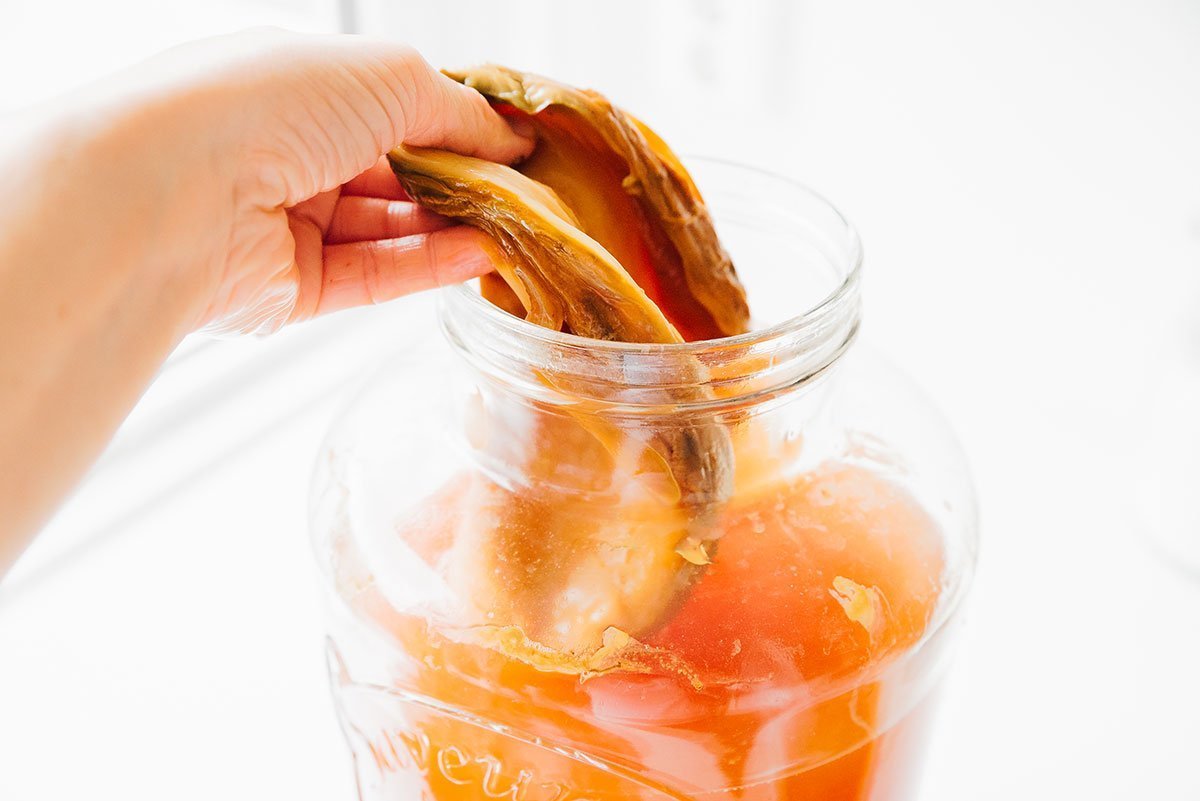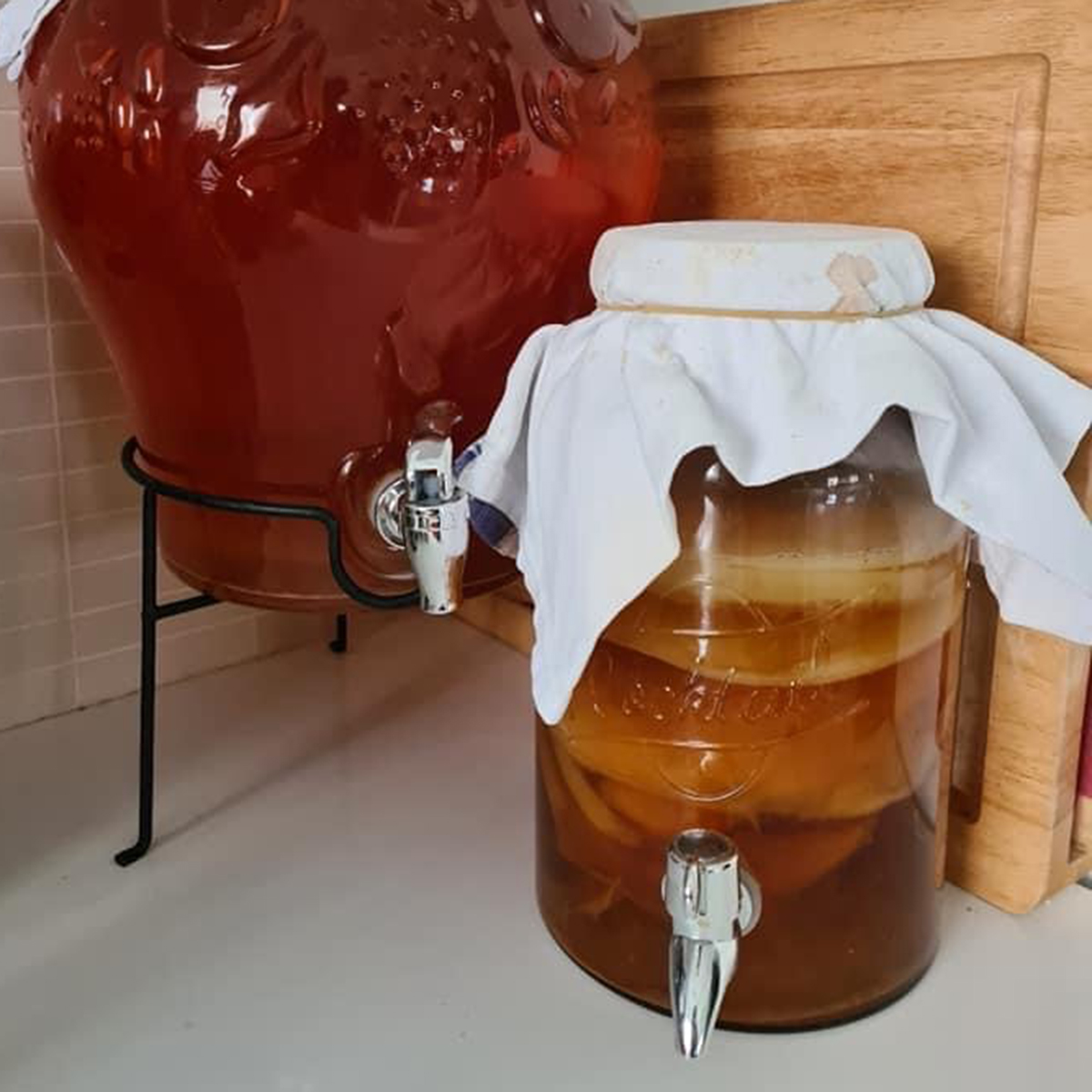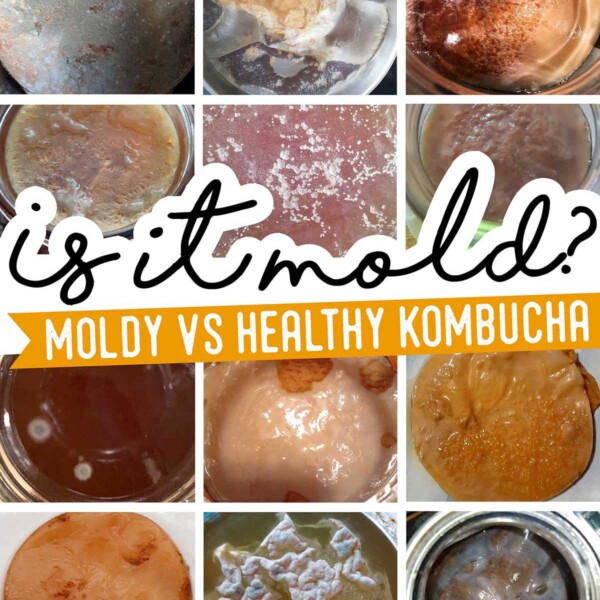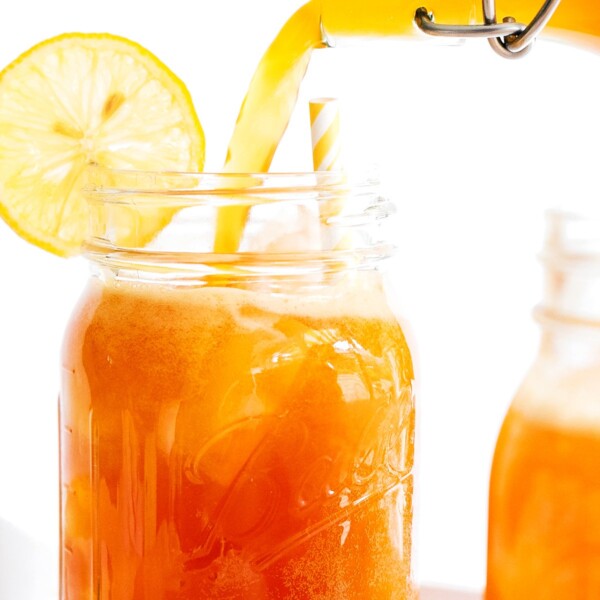Is it bad if your kombucha SCOBY sank? And should you do something to fix it? Answering this common kombucha question here!

It’s a question I get all the time. “My kombucha SCOBY sank! Is it dead / broken / moldy / still working?” I’m here today to tell you that it is perfectly okay if your SCOBY sinks!
And while a SCOBY may sink or float around the kombucha, a new baby SCOBY will likely form on top. This is also okay! A SCOBY forming on top of kombucha indicates healthy kombucha, but a sunk SCOBY doesn’t necessarily indicate unhealthy kombucha.
The SCOBY will continue powering the kombucha reaction, regardless of where it decides to hangout in the jar.

Why your SCOBY sank
There are a few reasons why your kombucha SCOBY may have sunk.
The most obvious is physics! When you drop in your SCOBY, it will initially sink but then slowly float back up to the surface. As carbonation develops in the brew, it will lift the SCOBY back to the top.
If the natural carbonation of your first fermentation kombucha is slowed, this could cause the SCOBY to sink. Carbonation, which is a bi-product of the yeast, could be slowed down by a drop in temperature or inactivity of the yeast.
With that said, not all SCOBYs are created equally! Your SCOBY may be more dense and heavy, which could cause it to perpetually sink.

Signs of an unhealthy SCOBY
While a sunken SCOBY does not indicate an unhealthy SCOBY, there are a few signs you should look out for:
- Dry or fuzzy (circular) patches, which would indicate mold
- White, gray, green, or black areas, which would also indicate mold
- A completely black or shriveled SCOBY, which could mean a dead SCOBY (this is rare)
Grab our comprehensive guide to identifying mold on kombucha here.
So should you worry if your SCOBY sinks?
In conclusion, if you ever find your kombucha SCOBY sinking to the bottom of the brew, don’t panic! It’s perfectly normal and doesn’t necessarily indicate any issues with your fermentation process.
Remember, the SCOBY is adaptable and can change its position based on various factors. As long as the brew smells and tastes fine, and there are no signs of mold or other abnormalities, you can continue brewing with confidence. Embrace the deliciousness of kombucha brewing, where even a sinking SCOBY can create a delicious and nourishing elixir.




How do I send you a photo to help me decide if mold?
Thanks
Feel free to post a photo in our kombucha Facebook group to get lots of brewer opinions!
what do you mean dry exactly? sometimes my scoby’s float above the brew and i have to poke them down so they dont dry out even though sometimes i forget to check, especially my hotel. i havent noticed any fuzzy spots yet, just some whiter looking areas that are lighter in color. so are mine ok,for i keep using them?will the top one become to dry to use?
As long as it’s not fuzzy you should be all good! By dry I just mean the top is out of the liquid and surface kombucha has evaporated off, giving it a dry appearance.
Hello!
I was making my first scoby, moved it around and now it’s no longer floating on the top but in the middle. It’s fairly thin, what should I do? Will it still thicken to the point where I can make kombucha with it? Should I try to move it to the top before another scoby form? Should I leave it and then wait for the next scoby to form?
Thank you so much for replying!
Honestly, brewing kombucha is more about adding the starter tea than it is the SCOBY/pellicle! 😀 Don’t worry about where it is in the brew, another will form on top naturally as your kombucha ferments.
Hi Sarah
If the baby Scoby has mould do I discard the whole thing including the mother and everything. Nothing can be saved????
Marie
Unfortunately yes, that’s correct. So sorry to hear it, Marie! You can try using more starter kombucha next time to help make the kombucha more acidic right off the bat, which should help to fight potential mold.
Is a SCOBY that forms on the second fermentation able to be used to start a new batch or should I throw it out?
You wouldn’t want to use that in a first fermentation as it could cause mold. You can throw it away (or into a smoothie for a probiotic boost!)
Hi Sarah
I just recently found out I’m allergic to brewers yeast. What is the yeast in Kombuchas. I hope it’s not brewer. Thank you
Kombucha shouldn’t contain brewers yeast, but double check on this page to be sure (it breaks down exactly which strains of yeast are in kombucha).
Hi Sarah,
Just a point for clarification: as I understand it white patches are usually nothing to worry about and may well be Kahm yeast.
Example
… and in fermentation more generally
Example
Do I have this correct?
G.
p.s. It is interesting that in fermentation more generally (… 2nd video) Kahm yeast is regarded as significantly less distasteful than in Buch ???? … I wonder why?…
Yep Kahm yeast is typically not harmful in kombucha, but it can influence the flavors so we try to avoid it where possible.
Could I put doTerra essential oils in my second ferment to add flavour.
Example Ginger lemon lime
Hi Margaret! I think it can be done, but I haven’t personally tried this yet. But I would think so long as the oils are edible, then it should be fine in F2. Would love to hear how it goes!
No!! Please do not do this. DoTerra are incredibly irresponsible to suggest people ingest essential oils – I’m training as a clinical aromatherapist and I would not advise anyone to ingest oils.
Hi Sarah,
Thank you so much for your informative page. I made my scoby and 3 batches of kombucha which are perfection! so THANK YOU!!
i’m wondering if in the second fermentation in addition to fruits I can add olive oil to my kombucha?
Thanks!
So happy you’re liking it Mona! I haven’t tried olive oil so I can’t say for sure. The oil does have the potential to go rancid, but you could always give it a go and see what happens!
So what do you do with the kombucha or scoby Throw it out? I’ll send picture in fb
What else can you use a scoby for?
I love making smoothies or candy! 😀